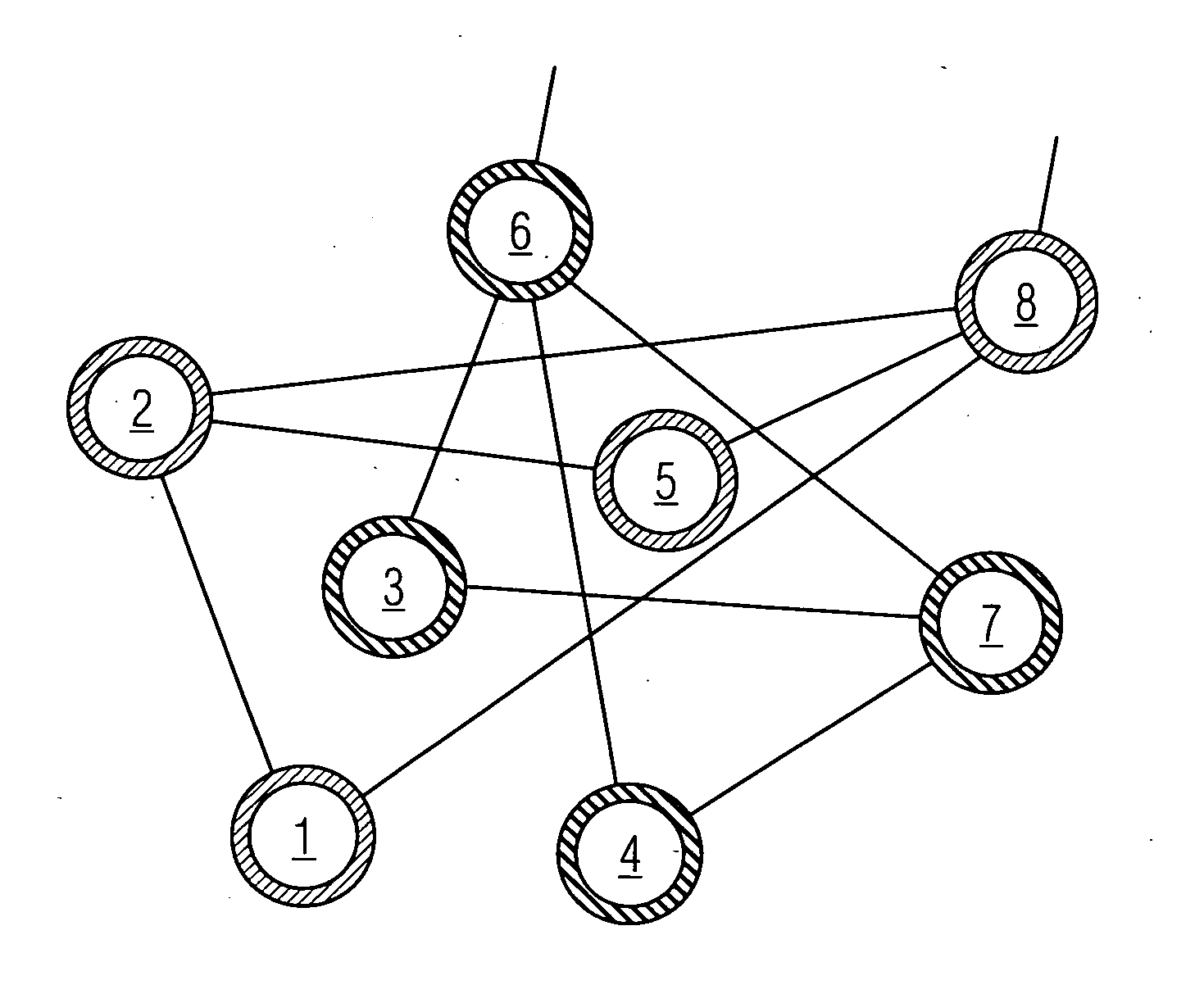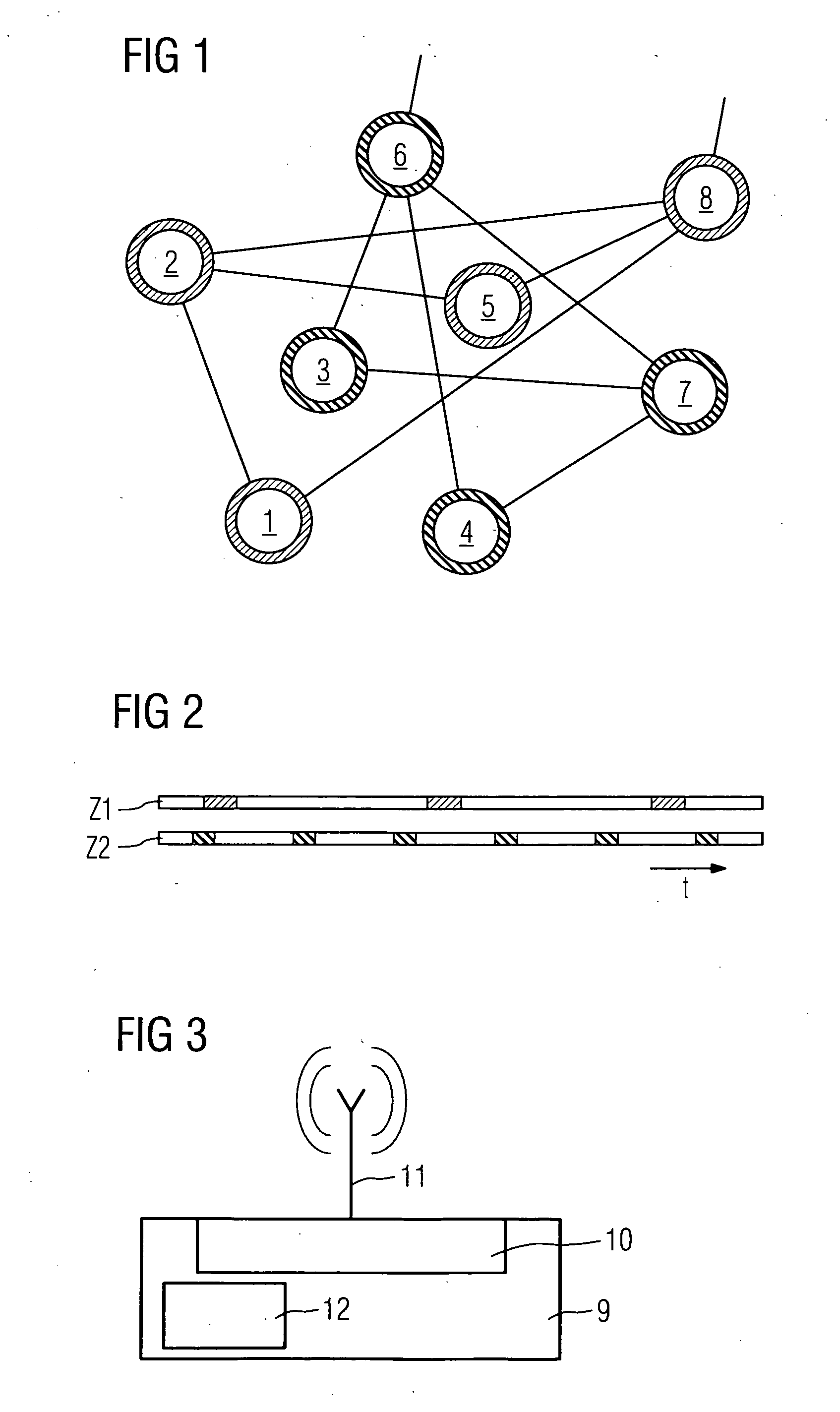Method for Operating a Radio Network and Subscriber Device for Said Type of Network
a subscriber device and radio network technology, applied in power management, high-level techniques, wireless commuication services, etc., can solve the problem of frequent limitation of the amount of energy available, and achieve the effect of reducing the amount of energy required for data transmission
- Summary
- Abstract
- Description
- Claims
- Application Information
AI Technical Summary
Benefits of technology
Problems solved by technology
Method used
Image
Examples
Embodiment Construction
[0018]FIG. 1 shows an exemplary radio network with eight subscriber devices 1 . . . 8. In a start-up phase the subscriber devices 1 . . . 8 respectively send telegrams to notify the respective other subscriber devices of their requirements relating to data transmission frequency. During network optimization a configuration facility, which can be arranged centrally in the subscriber device 1 for example, determines from the subscriber devices 1 . . . 8 the communication partners, which suit one another best with regard to their requirements. In the meshed radio network shown in FIG. 1 this is done by means of a grouping, in which different subscriber devices are respectively connected together to form an independent meshed network. This can take place in such a manner that the subscribers start up temporally one after the other. Each subscriber broadcasts its requirements / functions, which are possible in the respective system, on all channels. It then receives a response from all the...
PUM
 Login to View More
Login to View More Abstract
Description
Claims
Application Information
 Login to View More
Login to View More - R&D
- Intellectual Property
- Life Sciences
- Materials
- Tech Scout
- Unparalleled Data Quality
- Higher Quality Content
- 60% Fewer Hallucinations
Browse by: Latest US Patents, China's latest patents, Technical Efficacy Thesaurus, Application Domain, Technology Topic, Popular Technical Reports.
© 2025 PatSnap. All rights reserved.Legal|Privacy policy|Modern Slavery Act Transparency Statement|Sitemap|About US| Contact US: help@patsnap.com


